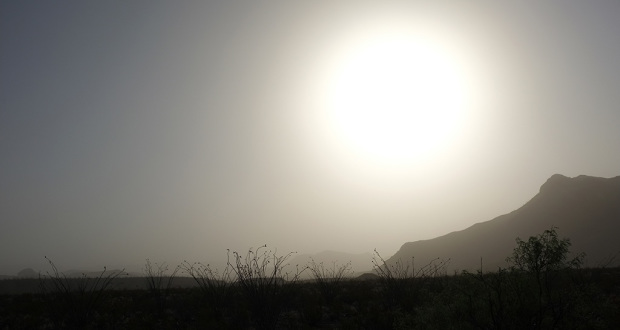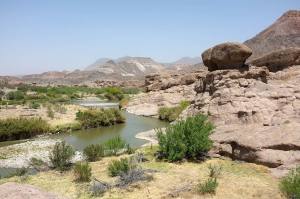The park’s southern boundary plays tag with the Rio Grande – a rolling scenic drive framed by mountains on both sides of the Texas border and canyons that pour off into the river.
To get to the heart of the park calls for a bigger commitment – a jaw-rattling drive of 27 miles over a washboard gravel and dirt road. The scenery is spectacular, but set aside at least 90 minutes for the drive.
The reward is one of the most remote and undeveloped parks in the state. On both the drive in and out and on the two trails I took recently, I never crossed paths with another hiker.The park is so massive and its terrain so diverse that it’s impossible to appreciate it or even get your head around it on one visit. One backpacker who shared a night in the park’s bunkhouse had spent several weeks hiking its trails and blazing new ones and wasn’t close to being done.
Big Bend Ranch is down the River Road from its more famous cousin, Big Bend National Park. The drive snakes between the river on the left and the mountains, desert and canyons of Big Bend Ranch on the right. Along the road are some of the first trails that opened up in the park, and they’re still the most accessible.
- Closed Canyon (1.4 miles roundtrip) is so narrow that the trail is awash in shade most of the day. It’s a secluded, casual stroll that gets progressively more difficult. The farther you go, the steeper the pouroffs get, and you never get to see where they meet the Rio Grande.
- The Hoodoo Trail (1 mile loop) wanders through the park’s own little Stonehenge – a gathering of natural stone monuments on the banks of a curve in the Rio Grande. The short trail then loops down to the banks of the Rio Grande and climbs to a lookout that points downriver.
- West Rancherias Canyon Trail (9.8 miles roundtrip) follows a wide canyon cut in volcanic rock to a waterfall that often is just a trickle – or less. Along the way, it crosses a string of pristine ponds fed by a spring and ascends a rocky staircase. The Rancherias Loop Trail (19 miles) splits off from the path for a longer backpacking trip of two or three days.
- The Fresno Canyon and West Contrabando trails branch off the same trailhead north of the River Road. The Fresno Trail follows a broad dry wash up the lower reaches of the same canyon that blossoms into a massive valley in the heart of the park. The
Contrabando Trail is a network of trails through a diverse desert landscape that passes a waterhole, circles an old mining area and, if taken the full length, comes out near the park’s Barton Warnock Environmental Education Center.
The heart of Big Bend Ranch State Park – at the end of the long entrance road – is a vast Chihuahuan desert with a volcanic and heavily faulted landscape, dominated by the Solitario caldera and a series of steep canyons. Many of its more than 200 miles of trails are fairly primitive and difficult to follow, but a few offer a more dependable experience:
- Fresno Rim Overlook Trail (5 miles roundtrip) offers the advantages of a solitary desert hike without the challenges of many of the park’s more primitive trails. It cuts through a desert of creosote and octillo cactus, rolling up and down shallow arroyos past stands of cottonwoods to arrive at the west rim of Fresno Canyon. Across the broad valley from the overlook lie the massive flatirons of the east rim.
- Cinco Tinajas Trail (1.7 mile loop) climbs over a ridge and down into a narrow canyon where torrential floods have carved a series of five deep pools in the sculpted rock. Preceding these “tinajas” at the mouth of the canyon is an oasis of wildflowers and grasses surrounding a collection of shallow ponds. The higher ground on the trail looks out on a panorama of many of the park’s marquee landmarks.
In addition to primitive desert and backcountry camping, Big Bend Ranch has a lodge called the Big House and bunkhouse that resembles a youth hostel, with separate wings for men and women and a kitchen/lounge in between. The bunkhouse once offered prepared meals but now is transitioning to a community kitchen.



